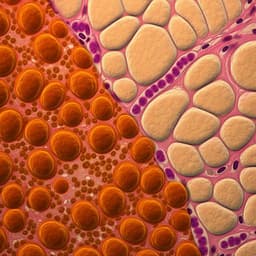
Medicine and Health
Alternate-day fasting delays pubertal development in normal-weight mice but prevents high-fat diet-induced obesity and precocious puberty
R. Ullah, C. Xue, et al.
This groundbreaking study by Rahim Ullah and colleagues explores alternate-day fasting's surprising effects on puberty and obesity in female mice. The results highlight ADF's potential to delay puberty in normal-weight mice while preventing obesity and early onset puberty in those on a high-fat diet. This research could open doors to innovative strategies for managing childhood obesity and precocious puberty.
~3 min • Beginner • English
Related Publications
Explore these studies to deepen your understanding of the subject.







